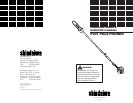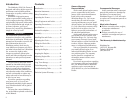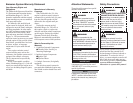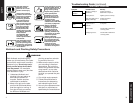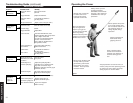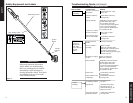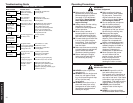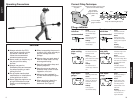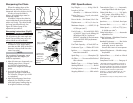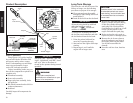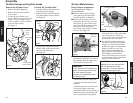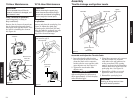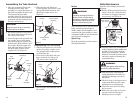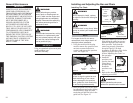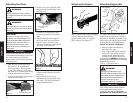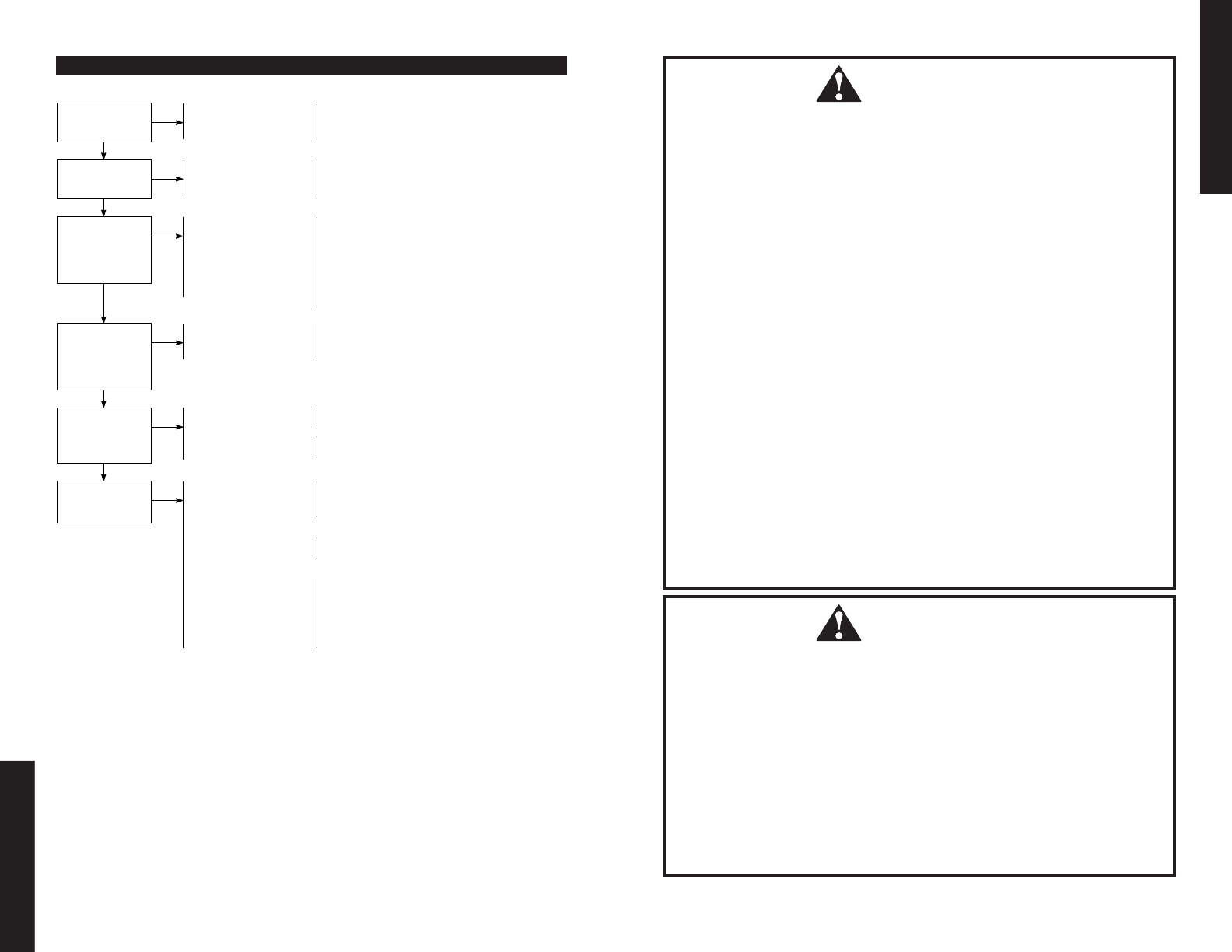
Operating Precautions
■ Make sure the chain and
sprocket are correctly adjusted
before operating the pruner
(see page 15 for adjustment
procedures). Never attempt
chain adjustment with the
engine running!
■ Always make sure the cutting
attachment is properly
installed and firmly tightened
before operation.
■ Never use a cracked or
warped guide bar: replace it
with a serviceable guide bar
and make sure it fits properly.
■ If a saw blade should bind fast
in a cut, shut off the engine
immediately. Push the branch
or tree to ease the bind and
free the blade.
■ Make sure there are no missing
or loose fasteners, and that the
ignition switch and throttle
controls are working properly.
■ Before starting the engine,
make sure the saw chain is
not contacting anything.
■ Make sure there is always
good ventilation when operat-
ing the pruner. Fumes from
engine exhaust can cause
serious injury or death. Never
run the engine indoors!
■ Do not operate the pole pruner
with the muffler removed.
■ When cutting a limb that is
under tension, be alert for
springback so that you will not
be struck by the moving limb.
■ Always stop the engine
immediately and check for
damage if you strike a foreign
object or if the unit becomes
tangled. Do not operate with
broken or damaged equipment.
■ Stop the unit immediately if it
suddenly begins to vibrate or
shake. Inspect for broken,
missing or improperly in-
stalled parts or attachments.
■ Never transport the pruner
nor set it down with the
engine running. An engine
that’s running could be
accidentally accelerated
causing the chain to rotate.
7
WARNING!
Use Good Judgement
SAFETY
WARNING!
Minimize the Risk of Fire
■ NEVER smoke or light fires
near the unit.
■ ALWAYS stop the engine and
allow it to cool before refuel-
ing. Avoid overfilling and wipe
off any fuel that may
have spilled.
■ ALWAYS move the unit to a
place well away from a fuel
storage area or other readily
flammable materials before
starting the engine.
■ ALWAYS inspect the unit for
fuel leaks before each use.
During each refill, check that no
fuel leaks from around the fuel
cap and/or fuel tank. If fuel leaks
are evident, stop using the unit
immediately. Fuel leaks must be
repaired before using the unit.
■ NEVER place flammable
material close to the engine
muffler.
■ NEVER run the engine without
the spark arrester screen in place.
Troubleshooting Guide
ENGINE DOES NOT START
30
Does the engine
crank?
Faulty recoil starter.
Fluid in the crankcase.
Internal damage.
Consult with an authorized
servicing dealer.
Consult with an authorized
servicing dealer.
Consult with an authorized
servicing dealer.
NO
Good
compression?
Loose spark plug.
Excess wear on
cylinder, piston, rings.
Tighten and re-test.
NO
YES
Does the tank
contain fresh
fuel of the
proper grade?
Refill with fresh, clean unleaded
gasoline with a pump octane
of 87 or higher mixed with
a 2-cycle air cooled mixing oil that
meets or exceeds ISO-L-EGD
and/or JASO FC classified oils at
50:1 gasoline/oil ratio
Fuel incorrect, stale, or
contaminated; mixture
incorrect.
NO
YES
Is fuel visible
and moving in
the return line
when priming?
Check for clogged fuel
filter and/or vent.
Clean as required;
restart.
NO
Is there spark at
the spark plug
wire terminal?
The ignition switch
is in “O” (OFF) position.
Shorted ignition ground.
Faulty ignition unit.
Move switch to “I” (ON)
position and re-start.
NO
YES
YES
Check the
spark plug.
If the plug is wet, excess
fuel may be in the
cylinder.
The plug is fouled
or improperly gapped.
The plug is damaged
internally or of the
wrong size.
Crank the engine with the
plug removed, reinstall the
spark plug, and re-start.
Clean and re-gap the spark plug
to 0.024 inch (0.6 mm). Re-start.
Replace the spark plug with a
Champion CJ8 or equivalent spark
plug of the correct heat range.
Adjust the spark plug electrode gap to
0.024-inch (0.6 mm).
YES
What To Check Possible Cause Remedy
TROUBLESHOOTING



